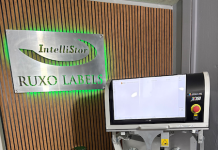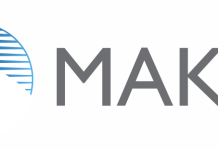The printing industry is experiencing a constant decline in all sectors. A growing number
of clients lately prefer digital media to printed media. In the late ’70s, the music group The
Buggles predicted in their number one hit album that video would kill the radio star. Even though video did pose an aggressive threat, radio survived. Similarly now, electronic media is threatening to kill printing, and although print is struggling, it will survive, yet it will be forced to streamline.
Recently, the increased supply of portable electronic devices with improved memory, screen resolution, battery life and mobility technologies have unfortunately grown a market of users that prefer electronic media to printed media. As technology matures and becomes more affordable, the demand for printed material decreases.
UNDERSTAND YOUR CAPACITIES
A print room’s overall capability is the sum of all its capacities. In a production line, the overall capability is also subjected to the process with the lowest capacity. Such a process will become a bottleneck that will reduce the production line’s overall capacity. It is therefore essential to understand your shop’s capacities in order to maximise your potential.
A print room’s capacities can be divided into five main categories:
AVAILABLE TIME
Probably one of the major commodities in production is available time. Print shops generally operate within one to three eight hour shifts. Increasing available time immediately elevates the overall capacity of a print shop, provided that the existing time is at maximum capacity and the additional time runs at a profit.
It is a very complex decision to increase available time. A simple example is one that most print shop owners will understand. The first step in increasing available time is often to agree to pay overtime for existing shift operators. Such a decision may lead to decreasing operator productivity for the shift as the operators’ focus may be on an increased overtime income only.
There is a cardinal difference in the production ratios between different print presses. The
production ratios vary from as little as 20% to 95% non-stop production of available time (see Process & Equipment below for more information). Therefore, as mentioned above, once you have reached your optimal capacity for available time, it will pay to increase your time.
PLANT, PROCESS AND EQUIPMENT
The main capital investment of your print shop is embedded in your plant, process and equipment. There is quite a long list of factors that one needs to consider when designing the optimal usage of these:
• Technology characteristics. Different technologies and categories within these technologies exist such as digital production (light, medium and heavy), Litho, Web and Gravure printing. These characteristics will determine the optimal production ratios, acceptable wastage percentages, etc.
• Inline capacities. Printing presses often have a range of inline capacities other than
printing. These functions are attached to the press and contain their own characteristics.
These functions generally have different characteristics to the main press that need to be understood in addition to the main press characteristics.
• Offline Capacities. These generally require more human intervention and floor space but
if applied correctly, could increase the overall capability of your print shop.
• Process Layout. There are different layout types used in production environments. The prescribed layout type is dependent on elements such as job sizes, run lengths, etc. The right layout will release operational pressure.
• Space utilisation. Space is a valuable commodity in a print room. Unused or un-optimised space would offer an opportunity to increase capacity.
WORK FORCE
A print shop’s workforce is its largest cost of sale. The more automation in a print shop, the lower the salary cost of production, yet the higher the capital investment required in the print shop. It is much more complex to monitor the productivity of your workforce than that of equipment. If one takes a clinical production view on the workforce, this commodity contains definable capacities that can be evaluated and understood.
Some of these capacities are:
• Available time (number of staff x working hours).
• Output per head.
• Income per head.
• Wastage per head.
Even though the ratios mentioned above are high level, it could be broken down into finer details in relation to different staff functions. A study in this field could assist you to understand functions in your print shop that are over-staffed and areas that are under-staffed. The human element of staff should not be ignored and would require specialised skills to assist in managing it.
STOCK
Stock levels are key for non-stop operations that are in return essential to supply clients with the required level and quality of service. Efficient stock levels on the other hand requires working capital and increases risk in the print room.
A further complexity of print room stock holding is the potential wide variety of stock items that could be required by clients. Think for instance of different types of stock like paper sizes, colours, weights and textures, finishing, fittings, etc.
Stock levels therefore need to be calculated carefully in order to find the best balance between availability, cost and risk.
WORKING CAPITAL
Working capital is a key element of all production environments. One needs to protect the working capital of your business and ensure that there is always sufficient funds to maintain and sustain all the required capacities in the print room. Working capital is often under pressure if a print room is not profitable or when the print shop’s debtor’s book is unhealthy.
It is therefore essential to follow standard financial management principles and constantly
evaluate your position to prevent a scenario where your business is forced to make tough business decisions due to a lack of cash flow.
CHOOSE YOUR MARKET CORRECTLY
You should choose your market, the market should not choose you. Carefully select your market based on the capacities that you offer. An optimised print room that offers printing within their capacity’s optimal ranges will be able to offer a more competitive price and still be profitable.
RE-POSITION YOURSELF WITHIN THE MARKET
Sometimes market segments mature, change or fall away entirely. This is a well-known phenomenon in the printing industry. Successful printers often have to evaluate their products in line with market demands. Trends in the printing industry generally show slow, constant declines or uptakes. You should constantly evaluate the performance of all the products in your print room to scale down declining products and re-invest in growing products.
CONTINUOUS IMPROVEMENT
Consumers are used to constantly improving markets. What you do today may very well outplay your competition, but tomorrow they will have caught up with you and the day after you may be falling behind. Some areas in a print room that constantly change include:
• New technologies such as 3D printing, scented printing, etc.
• Improved service levels.
• Improved costing.
• Added values.
Offering continuous improvements will keep your current clients interested and attract new clients.





















